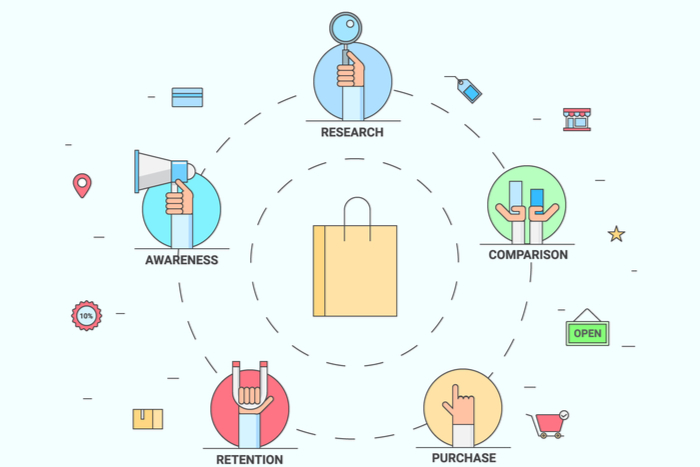A little over a month ago, I was having network coverage trouble on my phone. While this could have been restricted only to a select area, I shrugged off the idea of reaching out to the service provider. Soon it progressed to data connectivity issues. To solve this, I visited the store and the customer care representative gave me a reason that my SIM card was worn out. Therefore, getting a new one seemed to be the only logical solution at that point in time.
But the problem just didn’t seem to go away, even though I was one of their most valued customers. While I thought to move to a new telecom provider using the mobile number portability option was an easy and quick fix, the journey was long, nerve-wracking, and something I would never want to experience again.
That’s when I realized that the multi-channel approach is still predominant in most enterprises. While omni-channel is the present and the future,implementing it and putting it to use is where brands need to be. Even though the marketplace has been abuzz with omni-channel engagement, not everyone has been able to bridge the gap and offer seamless experience throughout the journey.
What is an omni-channel strategy? Why has it become important?
The word ‘omni’ comes from the original word Omnis which means universal. It is essentially about the continuity of your journey experience from start to finish, despite any channel, anywhere or anytime. But the actual customer experience received is galaxies away.
In fact, Aberdeen Group Inc. predicts that enterprises with strong omni-channel customer engagement strategies retain an average of 89% of their customers, in comparison with 33% of businesses that have weak omni-channel strategies.
With a proactive approach, enterprises have access to better insights and buying patterns that makes a drastic difference to how the journey pans out. This ultimately reflects in hunting new customers and increasing retention by keeping in line with the brand promise that they offer, that often goes unnoticed or is forgotten.

Why do telecom providers need it in particular?
The telecommunication industry over the years has seen a spectrum of changes. They bridge the communication gap and is the backbone of digitalization. Since then telecom operators have undertaken the effort of digitizing the internal processes as well as customer interactions.However, they are faced with complex challenges that include physical products mixed with the range of services that they offer.
They face the following difficulties during operation:
- Lack of coordination
- Poor overall digital vision
- Siloed interactions
According to Accenture:
- The customer’s journey is dynamic
- The journey is accessible
- And the journey is continuous as the exposed touch points are always on
So, here are five motives why you need an omni-channel strategy for your contact center especially in the telecommunications industry:

Say goodbye to siloed interactions:
Silos of customer engagement have become a factor of customer discontent and can cause the customer journey, more so the experience, to become fatal.
Subsequently, implementing an omni-channel strategy impacts how an enterprise functions from top-down. This means transparency no longer takes a backseat across departments and the ‘power to contact’ shifts back to the customers.
As departments work hand-in-hand, it is a key way to overcome challenges and develop a synergy between teams, with the common aim of keeping customers happy.
A unified view of the customer:
In an era where communication between businesses and customer has become a two-way street, it is common to receive multiple service requests from a customer. But not all the requests end up successful and one bad move can make you lose a privileged customer.
Therefore, the first step in the journey of customer delight – have a 360-degree view of the customer. Multiple customer profiles lead to disconnected experiences, thus there is a need to connect customer profile information across the different systems.
This can help easily dissect customer sentiments and reduce the propensity of churn by identifying customer demographic, usage and purchase patterns and transactions.

Optimized and sustained channels using big data and analytics:
For an efficient omni-channel strategy, it is important that channels complement one another. As telecom giants compete to outdo the other, it is necessary that both online and offline channels are aligned and data is consistently monitored.
Using the analytics engine, it is possible to deliver a personalized experience to customers by analyzing data from purchasing patterns and search history. This also helps discover opportunities in the customer journey that could help win over the customer during moments of dissatisfaction.
Track customers across the journey:
Easily track each customer journeys individually. Understand what the customer is saying about the enterprise and gather their sentiments across each phase along with their preferences.
Enterprises that use an omni-channel platform can filter customer journey data based on interaction type. You can also find triggers of displeasure and use this data to translate customer needs into actionable insights to create a proactive and personalized experience across different channels. This can then be implemented for individual or a group of customers who have similar behavioral patterns.

Evolving with change:
As customer needs and preferences change over time, this process will continue to be an area of expansion and development. With data and experience driving the relationship between the customer and the enterprise, it won’t be long before customers find newer channels of interactions.
Enterprises need to be on the lookout for opportunities to monetize data and generate revenue. This can also mean studying data over a period of time to improve the quality of service and keeping technology up to par with the market.
But why haven’t businesses invested in omni-channel technology yet?
Most of them continue to work on legacy systems with interfaces that cater to channel-specific experience. The technologies that they use are not readily available to install a plug-and-play omni-channel platform.
The lack of flexibility is what is keeps them lagging in the game amongst the competition. And they also struggle to keep up with their customers’ demands and expectations.
Omni-channel technology is not a trend that will disappear in the near future because of its demands by customers. Our unconscious interactions with brands every day becomes data and insights for every enterprise. And it will continue to be a key attribute that they use to devise omni-channel strategy and deliver not just impressive but superior customer experience.
Have you invested in an omni-channel strategy yet?
- Categories
- Tags
- Archives
Subscribe For Updates
Get the Servion Blog updates in your inbox.
Recommended For You
- C-Zentrix Partners with Servion to offer cloud-based omnichannel and AI-powered contact center solutions in India
- The Road to Adoption: ChatGPT is the EV of customer experience
- Why is customer service still a challenge in today's business landscape?
- Proactive Outreach in Customer Service, Impact and Use Cases
- Why investing in CX is all the more critical in an uncertain economy?











